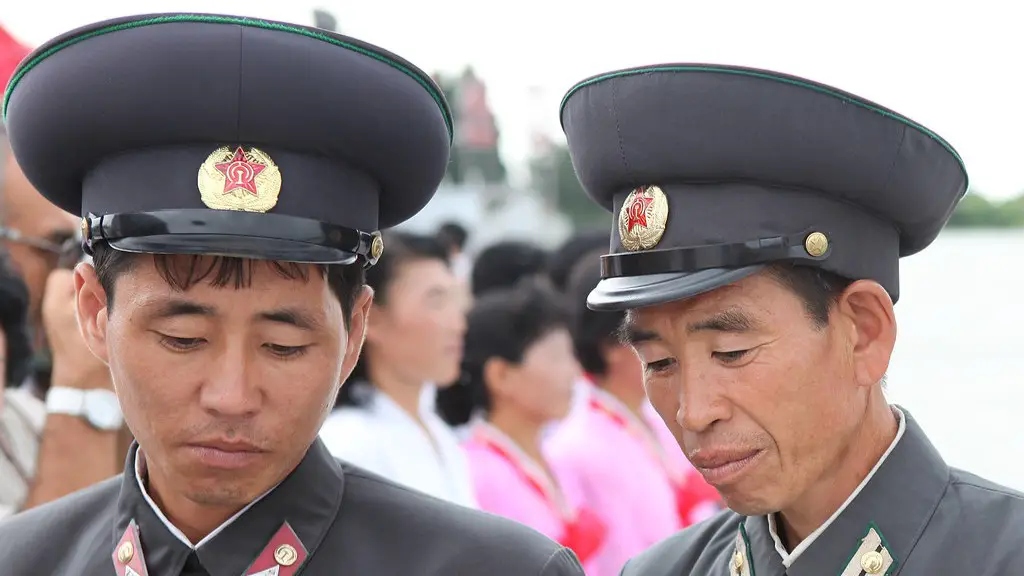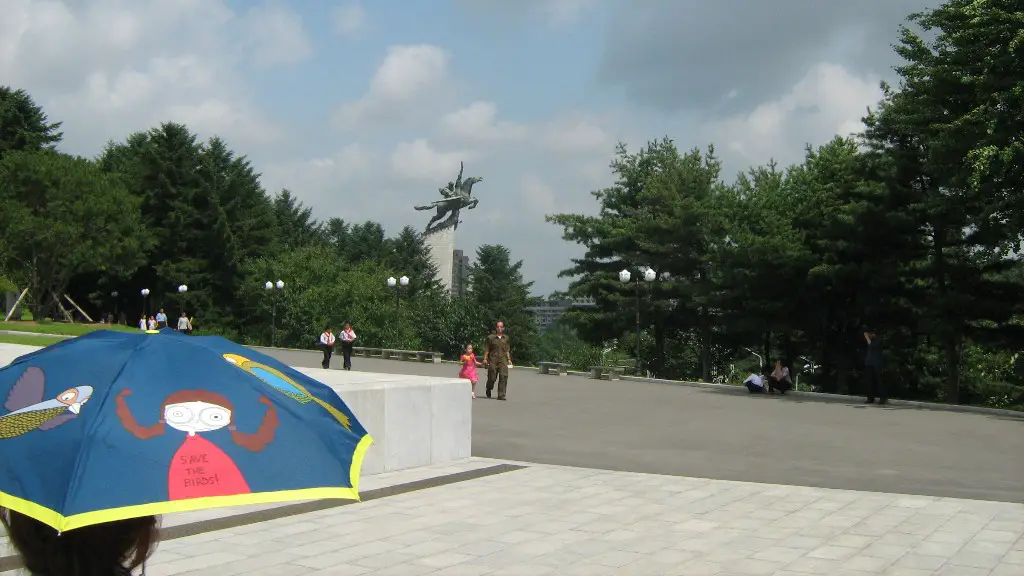Ever wonder why North Korea turns its lights off at night? The secluded lifestyle of the Asian country, combined with its history of being cut off from the rest of the world for countless years, reveals a lot about its exceptionally dark nights. In this article, we’ll be looking at why North Korea is so dark at night and why so much of the country’s darkness isn’t natural.
It’s not just the darkness of night that’s the issue but how much of the country is visible from space at night. Satellite images of North Korea, compared to other countries in Asia and the world, look almost comically dark aside from one bright spot – the capital city of Pyongyang. Even around the rest of the country, it’s almost as if there’s no electricity being used save for a few national landmarks and sites around Pyongyang.
The short answer as to why North Korea is so dark is that electricity isn’t widely available and is unreliable. Estimates suggest that just 15% of households have access to reliable electricity, and even in those areas, blackouts and power shortages can occur often. Without electricity, night time and darkness become the norm, interrupted only by generators and other reliable sources of power.
But why is access to electricity so limited? North Korea has very little in terms of oil and other fossil fuels, with much of the country’s available electricity coming from its hydroelectric plants, as well as imports from its neighboring countries, mainly China. This makes reliable electricity largely dependent on North Korea’s ability to purchase fuel from external sources.
The lack of electricity also has a larger effect on North Korea’s economic and political situation. With little electricity and resources to generate economic growth, the country finds itself in dire poverty – the United Nations estimates that nearly 37 percent of the population is food insecure. Sanctions placed on the country due to its nuclear program have only contributed to this situation.
The darkness of night that can be seen from space is also largely a result of sanctions. Since China’s trade embargo on energy resources, North Korea has been unable to purchase fuel to power its infrastructure, leading to a drastic reduction in the amount of electricity available in the country. This has caused widespread power outages and the darkness of night only serves to heighten the country’s seclusion from the world.
While North Korea is in a dire situation in terms of electricity, the darkness is not entirely natural. It is a result of the government’s policy decisions, lack of access to resources, and the combined effect of international sanctions. For those living in North Korea, the darkness of night serves as a reminder of the hardships they face.
How Electricity is Generated
In North Korea, electricity is generated primarily through hydroelectric power plants. In the early years of North Korea’s electricity industry, most of the hydroelectric plants were constructed in partnership with the Soviet Union. While these plants have since been decommissioned, the North Korean government has invested heavily in hydroelectric power over the past decade.
The hydroelectric dams in North Korea have had a largely positive impact on the access to electricity in the country. While these dams have caused flooding in areas downstream, the increase in power generation has made electricity more widely available. Additionally, the North Korean government has invested in geothermal and solar power in recent years, with many isolated villages now having access to energy.
Impact of Sanctions
As mentioned previously, sanctions have had a critical impact on North Korea’s access to electricity. Since the beginning of the Obama administration, China has blocked the sale of oil and energy resources to North Korea, resulting in the country’s primary energy source, coal, becoming largely unusable. This caused a significant shortage of energy and led to an overall decrease in the amount of electricity available in the country.
The lack of electricity has had a direct effect on the North Korean economy, causing widespread poverty and food insecurity. Additionally, sanctions have also impacted the North Korean government’s ability to generate income, preventing the government from being able to invest in infrastructure or create jobs for its citizens.
Measures Taken in North Korea
In order to cope with the electricity shortages, the North Korean government has implemented a wide range of measures, from investing in alternative sources of energy to integrating technology into the nation’s power grid. The government has constructed a number of wind farms and solar power plants, and is investing in the modernization of its hydroelectric plants. Additionally, the government is implementing a smart grid system in certain areas of the country, which allows it to better track and regulate electricity usage.
The North Korean government has also taken steps to reduce electricity consumption, such as encouraging citizens to use energy-efficient appliances, and has implemented energy conservation policies in public buildings. Additionally, the government has implemented a strict rationing system, limiting the amount of electricity that households can consume, in order to keep the country’s energy usage in check.
Influence in Neighboring Countries
North Korea’s struggles with electricity have had a significant influence on neighboring countries, most notably China and South Korea. China, being North Korea’s largest trading partner, has been heavily involved in North Korean power generation, providing resources and financial aid that has allowed the North Korean government to invest in its hydroelectric facilities and other energy sources.
In South Korea, the North Korean electricity shortage has had a large impact on the South Korean economy, as the nation relies heavily on electricity from the North to meet its own energy needs. South Korea has since invested large sums of money in renewable energy development, with the government focusing heavily on solar and wind energy, as well as nuclear power.
Possible Solutions
Given the dire situation in North Korea, what solutions can be put in place to increase the availability of electricity in the country, and improve the overall quality of life of its citizens? While the United Nations has attempted to broker an agreement between North Korea and South Korea, sanctions and the lack of resources have made progress difficult.
The best option available to the North Korean government is to invest in renewable energy sources. Given its limited access to resources, North Korea needs to focus on solar and wind energy, as well as geothermal power, to replace its reliance on coal and oil.
Additionally, North Korea needs to make investments in infrastructure, such as expanding its power grid and updating its outdated dams, in order to make electricity more widely available. Additionally, the North Korean government needs to focus on energy conservation and implementing rationing schemes to lower the amount of electricity consumed.




